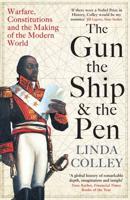Publisher's Synopsis
The History of the Battleship
Battleships were once the most powerful warships on the seas, dominating naval warfare from the late 19th century until World War II. Their history can be divided into key eras:
- Before battleships, "ships of the line" ruled naval warfare.
- These wooden warships had multiple gun decks and fought in line-of-battle formations (hence the term "battleship").
- Famous examples: HMS Victory (1765, UK).
- The Industrial Revolution brought ironclad warships, replacing wood with iron armor.
- The first true ironclad: France's Gloire (1859), followed by USS Monitor and CSS Virginia in the American Civil War (1862).
- By the late 19th century, pre-dreadnought battleships emerged with steel hulls, large-caliber guns, and steam engines.
- The British HMS Dreadnought (1906) changed naval warfare with:
- All-big-gun armament (multiple large-caliber guns).
- Turbine engines, making it faster.
- Heavy armor for protection.
- This started an arms race, with nations like Germany, Japan, and the U.S. building similar ships.
- Major Battle: Battle of Jutland (1916) - the largest dreadnought battle between Britain and Germany.
- Battleships reached their peak in WWII, but aircraft carriers started to take over.
- Notable battleships:
- Bismarck (Germany) - sank HMS Hood in 1941 before being destroyed.
- Yamato (Japan) - the biggest battleship ever, but was sunk by U.S. aircraft.
- USS Missouri (USA) - where Japan surrendered in 1945.
- Pearl Harbor (1941) - Japanese aircraft sank U.S. battleships, proving air power was superior.
- Battle of Leyte Gulf (1944) - the last major battleship battle.
- Aircraft carriers replaced battleships as the dominant warships.
- The last battleships, USS Iowa-class, served in the U.S. Navy until the 1990s.
- Today, no nation operates battleships-modern navies focus on aircraft carriers, submarines, and missile ships.
- Battleships are now museum ships, like USS Missouri and HMS Victory.
- Their design and firepower influenced modern naval destroyers and cruisers.
- They remain a symbol of naval power, but their era is over.










